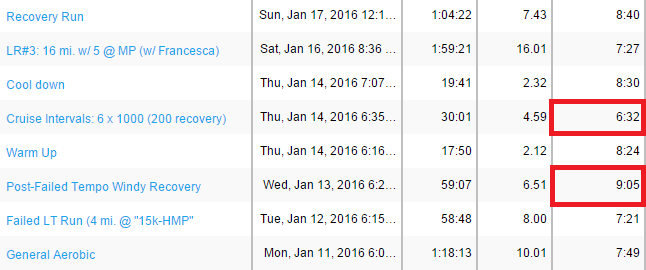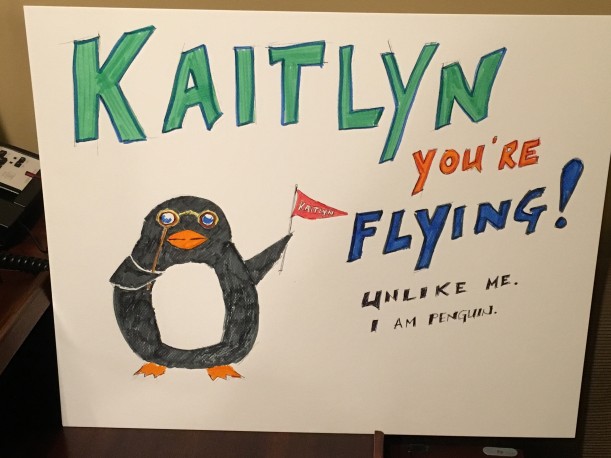I wrote a post reflecting on my recovery 100 miles in, and now that I’m at the one year mark, I thought it was about time to again step back and reflect.
For those of you who are new to this blog, I started it last year to track my recovery when I had a tibial stress fracture. The stress fracture kept me away from running for 108 days (but who’s counting), which was, by far, the longest block of time I’ve ever taken off from running since I started running seriously again in the summer of 2012.
The stress fracture came at an emotional time for me. I was diagnosed a week before I was supposed to start training for the Boston Marathon. I went to college in Boston, and while I never imagined I would ever run a marathon back then, once I picked up running again, it became a big dream for me.

At first, I thought I might still make it to Boston. The doctor thought it was a relatively mild stress fracture, and that I’d only need five weeks in the boot. Unfortunately, it was much worse than the doctor initially thought. Another MRI later, I was on crutches for two weeks, followed by another three weeks in a boot. I would have to run the Boston Marathon another day.
On March 11, I was able to go on my first run: 1 min. running, 4 min. walking x 6. That first day back, I ran a total of 1.02 miles over 30 minutes. Since then, I’ve run 2,045 miles – the most I’ve ever run in 365 days.

The recovery process was long, emotional and at sometimes melodramatic. Recovering after so much time off is hard! I seriously thought I would never be able to PR again. With hindsight, I can see I was being a little ridiculous (as my fiancé likes to point out from time to time…). But when suddenly your former “easy” paces feel hard, it’s distressing!
Still, I was smart, and I was determined to stick to a conservative recovery plan. I didn’t – and still don’t – ever want another stress fracture.
When I was injured, I spent a lot of time reading books about training. (When you can’t run, you might as well read about running, right?!) I learned a lot, and I decided to approach my recovery as a chance for a fresh start – to get back into running, and to do it the right way.
A year later, I am 100% sure the key to getting healthy again – and staying healthy – has been learning to respect the purpose of every workout, and in particular, learning to run recovery runs really and truly easy. That might sound stupid, but I think the majority of runners fail to understand how to recover.
Back before my injury, I rarely ran more than 30 seconds slower than marathon pace. Often, my slowest runs of the week were my long run. That, I learned, is absolutely not the way to handle training. What I’ve learned is that every run should have a purpose, that I should understand that purpose going in, and stick to it.
In a typical week of training, I’m going to have four different types of runs: workouts, general aerobic runs, long runs, and most importantly, recovery runs. Workouts are hard and fast. Sometimes they are intervals at marathon pace, but usually they are intervals somewhere between 10k and half marathon pace, or about 25-45 seconds per mile faster than marathon pace. General aerobic runs are easy, but not recovery runs. They are usually about 60-75 seconds slower than marathon pace and all about getting more time on your feet. Long runs are faster than general aerobic runs, usually about 40-60 seconds slower than marathon pace.
And recovery runs—those ever important runs— are slow and steady. I aim to run my recovery runs by heart rate, aiming to keep my heart rate at or below about 72 percent of my max heart rate. That usually works out to be 80-100 seconds slower than marathon pace, depending on how fatigued I am.

So for those keeping track at home, that means that during a given training week, I can run up to 45 seconds faster than marathon pace and 100 seconds slower – that is a difference of almost two and a half minutes. That is a huge variation compared to what I used to do, which was run anywhere between 30 seconds faster than marathon pace and 30 seconds slower.
Why are recovery runs so important? By running at a real and true recovery pace, I allow my body to heal and recover, which allows me to push hard on my hard days. If I push too hard on what are supposed to be easy days, it’s only a matter of time before my body is going to break down on me. Just you can run a certain pace doesn’t mean you have to do it all the time! Leave your ego at the door for recovery runs.
If you need proof that this approach works, just look at some of my blog posts from the last year. Since my stress fracture, I’ve PR’d in every single distance that I’ve raced. I have only run one marathon in that time, but in that marathon, I shaved 15 minutes off my prior best, putting my time in a territory I never in my wildest dreams thought was possible.
So a year on, what’s the moral of my recovery story? Run easy easy and hard hard. And always dream big.



Wow. Good for you. I love stories of perseverance like this. Your Boston medal will be well-earned.
LikeLiked by 1 person
Thanks! I think the race will be much sweeter with it being so long in coming!
LikeLike
Can’t agree more. You are an inspiration! Good luck and we hope to see you at the starting line in April!
LikeLiked by 1 person
Thank you! Hope to see you guys out there 🙂
LikeLiked by 1 person
I have been looking at my running lately and feel that I need to make some changes. I don’t know if that requires me to have a coach to help me learn how to do that and tell me what to do or what? I am trying to figure it all out. I run how you used to and not sure how to change it. Any books that you would recommend I read so I can try and learn?
LikeLiked by 1 person
I think the best for me was Advanced Marathoning by Pete Pfitzinger. He does a really good job at explaining the purpose of every run, and giving some target heart rates and pace ranges. He also has a good variety of plans to choose from. It might help to try a plan from a book before splurging on a coach!
I think the other thing that helped me was getting a heart rate monitor. I’m naturally a very competitive person, so it can be hard to see a pace on my watch that is so much slower than what I *could* be running. I found it really helpful to be able to switch my watch so it would only show me my heart rate. That helped me let go of pace, and made it a game to keep my heart rate in the range that it needs to be for a run to really count as “recovery.” Good luck! I think just acknowledging that you need to make a change is a big step!
LikeLiked by 1 person
Thank you for telling me about the book. I looked it up to find out more details and it sounds like a good book for me. I will pick it up and start reading once I finish Marathon Woman.
I have a heart rate monitor but I don’t use it. Something I will have to dig out of the drawer it seems. 🙂
I am a competitive person as well so I understand where you are coming from. What I find interesting about me though is that even though I am to run long and slow runs for my long runs I run quicker that I ever did before I was marathon training. So strange.
Thanks for sharing with me.
LikeLike
I love this post. It’s so great to see that you’ve come back from a devastating injury and now train so smart. Easy days easy is the way to go. Can’t wait to see how Boston goes for you and I love following your training so far.
LikeLiked by 1 person
Thanks for posting this. I injured myself after I ramped up my running intensity with very little recovery time after a poor showing at a race last year. I’ve been lucky to have overcome the injury, but I’ll take your advice. Thanks!
LikeLiked by 1 person
I’m glad you’ve overcome your injury! It’s so easy to get caught up in training and push too hard, particularly after a disappointing experience like a poor race. Good luck staying healthy!
LikeLike
Ah! Didn’t realize our stories were so similar. I actually went to BU for my first three semesters and spectated, but never thought about running a marathon until a few years later. I ran 6 Boston qualifying marathons in 2.5 years (Fall 2007-Spring 2010) and ended up with a stress fracture in my anterior tibial cortex. That being a peculiar type to have, they actually cleared me to run unless it started to hurt. Instead, whatever was going wrong also caused me to strain my hamstring, which made running terrible for about two years. I struggled to find motivation — why race if you’re so much slower than you used to be? And why do speedwork if you’re not going to race? I finally got it back together and ran another marathon in fall 2012 and spring 2013, then shifted my focus to shorter distances and speed until fall 2015. (Well, I DNF’d a marathon in spring 2015, so that return was supposed to have been sooner.)
I’ve also slowed down a lot. Coach says 60-75% max HR on recovery days. That’s usually about a minute slower than marathon pace, but sometimes even more. I just keep HR pulled up on my watch and don’t look at pace. Trails help, too (plus they’re soft). And I’ve greatly increased the amount of core and hip strengthening I do.
LikeLiked by 1 person
That’s so crazy how much overlap we have! I’m glad we are both back to running healthy. I do the same thing with my watch on easy days with just HR pulled up. It really helps dial it back when you are a competitive person. Here’s to staying healthy and getting faster 🙂
LikeLiked by 1 person